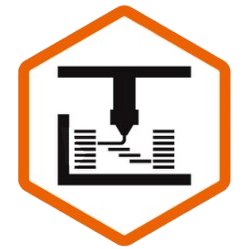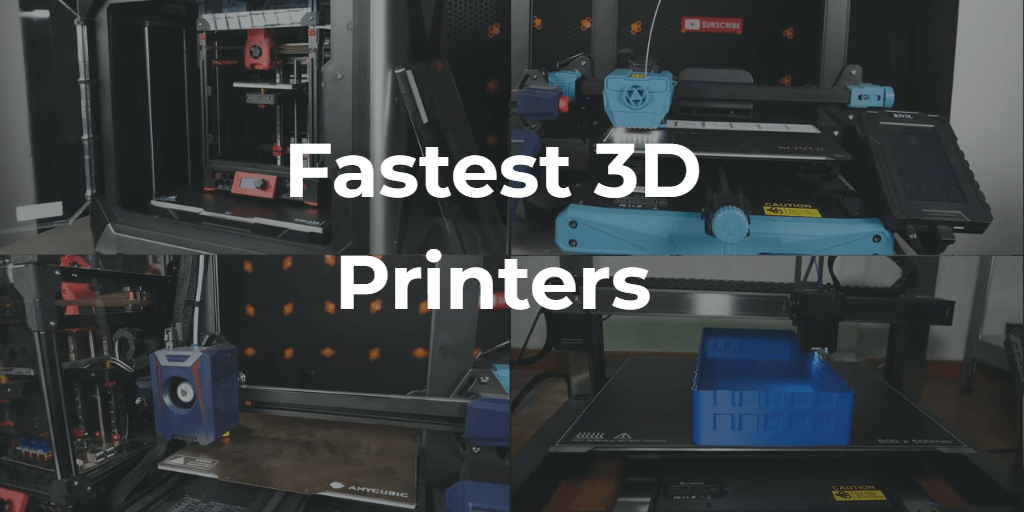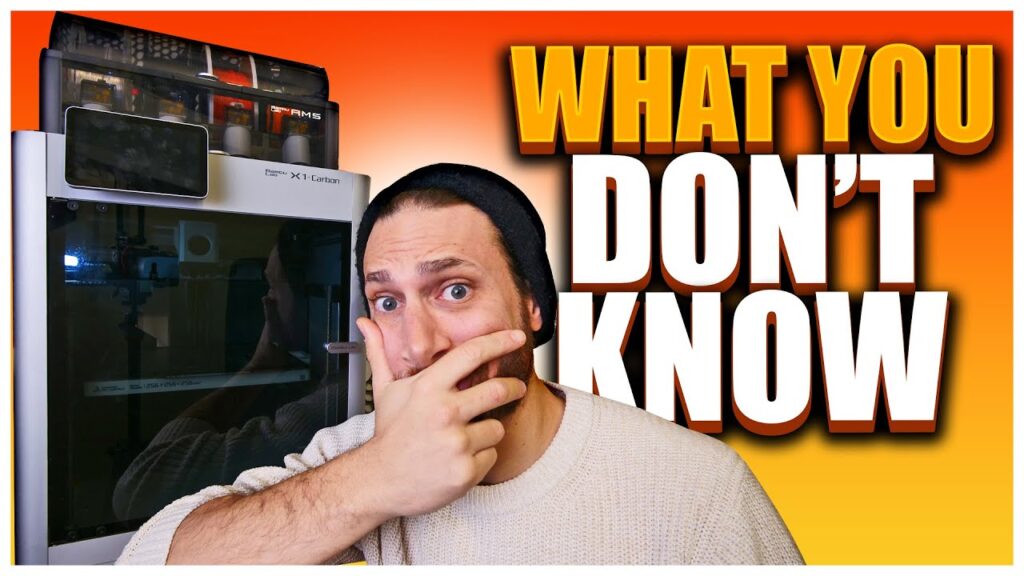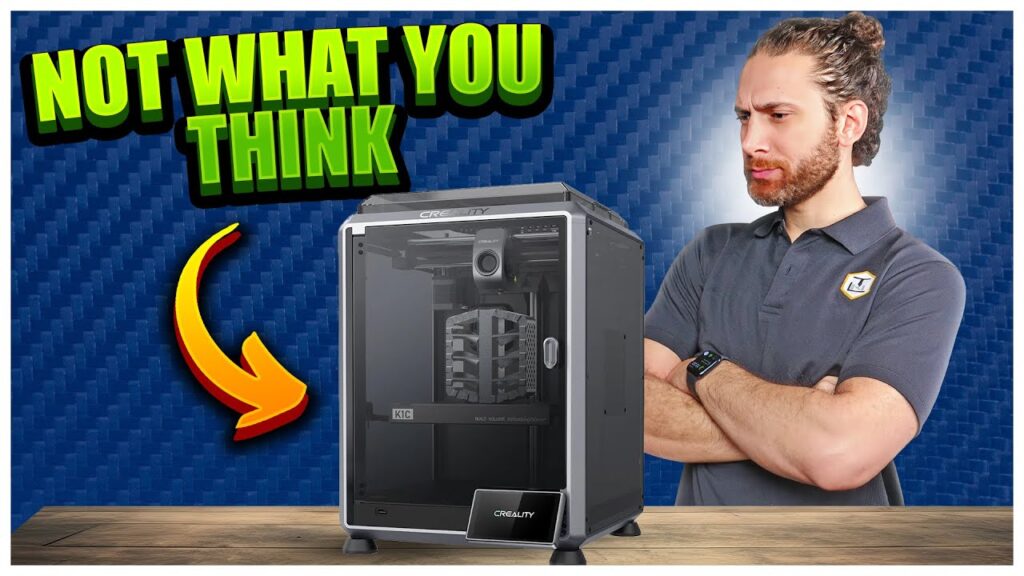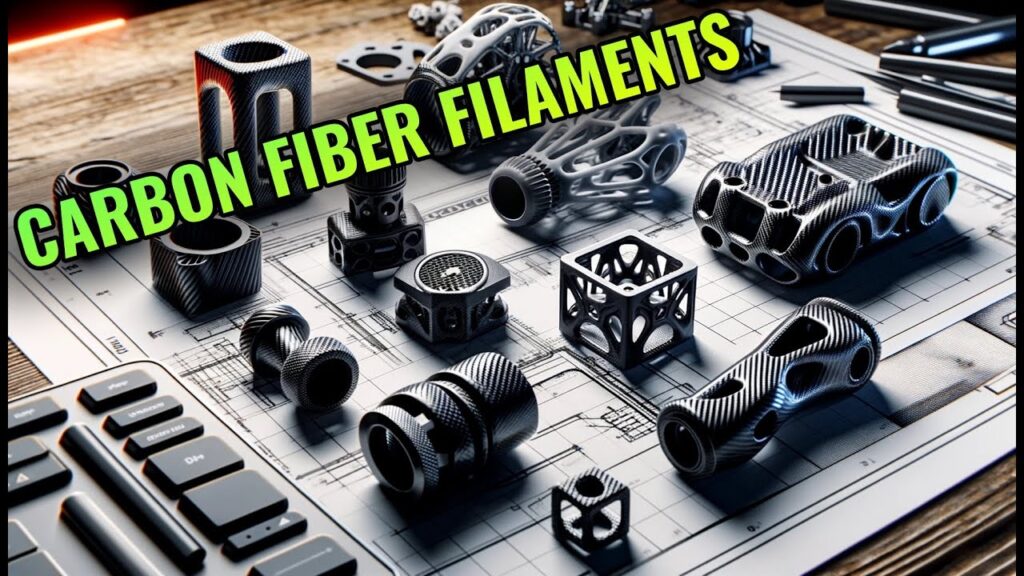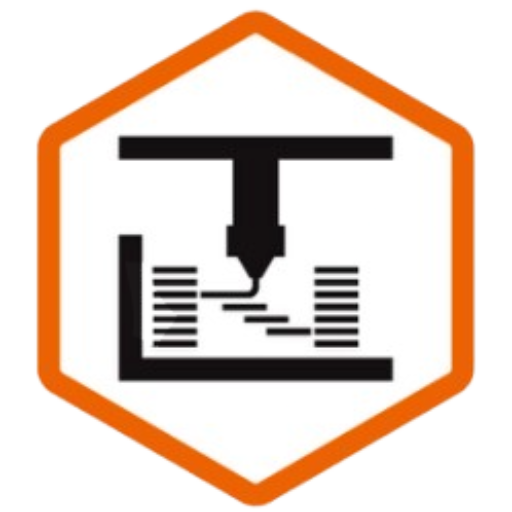You are not incorrect in believing that 3D printers are slow; however, you would be incorrect if you believe that all 3D printers are slow.
I don’t blame you for thinking that way, because very few fast 3D printers are truly ‘fast’. I’ll explain what I mean by that.
Fast 3D printing means not only printing objects quickly, but also doing so while maintaining high print quality and part accuracy to ensure the part is functional. It is pointless to print quickly if the part has a poor surface finish or is inaccurate.
You may have noticed that many manufacturers claim their printers are fast, making it difficult to separate wheat from chaff.
As a result, I have compiled a detailed list of the fastest 3D printers this year.
What is The Fastest 3D Printer?
Below is my list of the fastest 3D printers out in the market this year, including models that just recently got announced:
1. Bambu Lab X1 Carbon
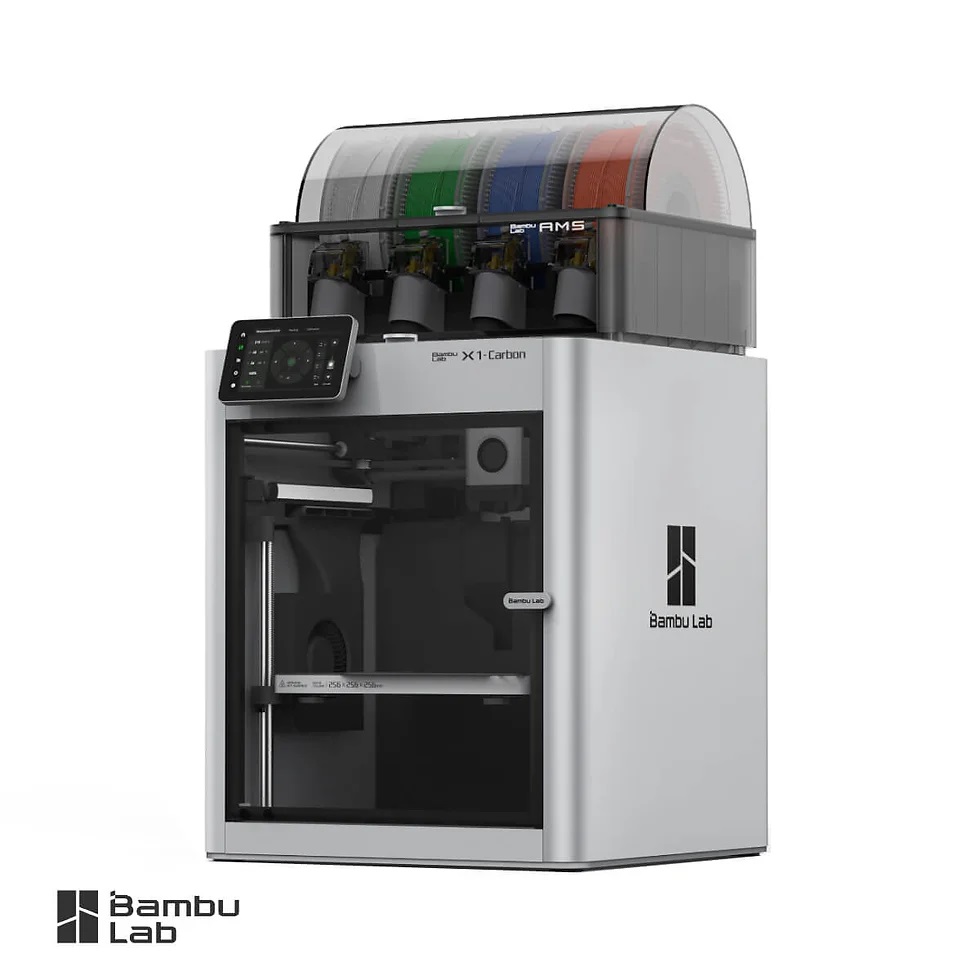
No list of “fastest 3d printers” would be complete without the new kid on the block, but the current, undisputed champion – the Bambu Lab X1 Carbon.
The Bambu Lab X1 Carbon has redefined what a fast FDM 3D printer can do. With 20,000m^3 acceleration, carbon rails, input shaping, resonance compensation, and more… this printer is not only fast, but also extremely accurate.
Coming in at roughly $1,000 (though the P1P is only $699 for a stripped-down version), the Bambu Lab is probably the fastest and best 3D printer you can buy right now – and it just works right out of the box.
Check out our 2-part review of the Bambu Lab X1 Carbon here:
2. Voron 2.4
OK, so technically, this isn’t a 3-D printer that you can just buy. But, nonetheless, it is easily one of the fastest and best 3-D printers available. Voron is a design group that develops open source, no-compromise 3D printers, but there’s a catch:
You need to print all the parts yourself. And source the metal parts and electronics. And build it.
This takes about 30-40 hours – at least. But, at the end of the day, you will have one of the absolute BEST 3D Printers (and certainly one of the fastest 3D printers), plus, the satisfaction of knowing that you built it all on your own.
You can check out our 2-part review and build series of the Voron 2.4 here:
3. Creality Ender 7
Technology: FDM/FFF
Print Speed: 250 mm/sec
Build Volume: 235 x 235 x 250 mm3
The Creality Ender series has to be one of the most popular 3D printer series in the world. These printers are used to print cool and useful parts alike. And its Ender 7 is one of the fastest 3D printers available, designed specifically for hobbyists and makers.
Ender 7 is a standard FDM 3D printer with a build volume of 250 x 250 x 300 mm3 and the ability to print in all basic materials such as PLA, ABS, TPU, and PETG.
The main advantage of Ender 7 is its fast printing speed of 250 mm/sec.
All hobbyists and makers who spend hours and days on prints to create their latest project will appreciate this high speed. This printer is the ideal solution for such eager makers, and it is also very affordable.
4. AnkerMake M5
Price: $499 onwards
Technology: FDM/FFF
Print Speed: 250 mm/sec
Build Volume: 235 x 235 x 250 mm3
AnkerMake is a new 3D printer manufacturer that recently raised funds for its new M5 printer on Kickstarter. The AnkerMake M5 is one of the company’s fastest 3D printers, printing at speeds of up to 250 mm/sec, which is nearly 5 times faster than most regular desktop FFF printers. PowerBoost™, which optimizes energy with its Y-axis transmission system and uses a powerful stepper motor, double-belt driveshaft, and stabilized-motion algorithm to push out loads of extra power for high-speed printing, powers it. It can also reach speeds of up to 2500 mm/sec2.
With a high precision of 0.1 mm, built-in AI camera monitoring, auto-created timelapses, auto-bed leveling, easy assembly, and a decent enough print volume of 235 x 235 x 250 mm3, it has all the makings of a great home printer.
The AnkerMake M5 not only prints faster, but it also has a multi-gear system for faster extrusion, a large heating block for faster filament melting, and more air input volume for faster cooling.
It should be noted that the 3D printer is not yet available for purchase through its website, but it is now fulfilling pledges made during the Kickstarter campaign.
5. FLSUN Super Racer (SR)
Technology: FDM/FFF – Delta
Print Speed: 200 mm/sec
Build Volume: 260 x 330 (diameter x height) mm
The FLSUN Super Racer (SR) is a super-fast 3D printer, as the name implies. It is one of the fastest 3D printers in this price range while still providing adequate quality performance. When compared to competing models, this printer’s fast operation will double your productivity.
It has an auto-bed leveling and print resume feature, as well as a removable lattice bed. It also has linear rail guides for improved printing accuracy, stability, and noise reduction.
You will be able to print popular filaments such as PLA, ABS, and PETG with this printer. Because it uses a Bowden extrusion system, it cannot print flexible TPU filaments efficiently.
6. Pantheon HS3 Printer
Price: $14,450 onwards
Technology: FDM/FFF
Print Speed: 300 – 500 mm/sec
Build Volume: 300 x 300 x 300 mm3
Another fast 3D printer worth considering is the Pantheon HS3 3D printer. It was recently showcased at Formnext 2022 exhibition and appeared to be a beast of a machine. High-speed printing is just one of the awesome features of the Pantheon HS3, which also has a variety of other specs that make it a worthy option if you are looking to buy a fast 3D printer.
It can print at speeds ranging from 300 mm/sec to 500 mm/sec. It prints carbon fiber parts with industry-leading accuracy, finish, and mechanical properties (Carbon Fiber PETG, Carbon Fiber Nylon, and Glass Fiber Nylon). It prints accurate parts right out of the box and requires little setup time.
The company even claims to have minimal maintenance, saving on operating costs, and boasts of a patent-pending floating frame system that can withstand external vibrations and shakes (even artificial).
Pantheon’s speed can be attributed to its reliance on its own High Speed Deposition (HSD) smart print head, which was designed with extensive computational simulation and real-world validation to maximize speed and reliability.
7. Essentium HSE™ 280i HT 3D Printer
Price: $129,000
Technology: FDM/FFF
Print Speed: 500 mm/sec
Build Volume: 395 x 500 x 600 mm3 to 695 x 500 x 600 mm3
Essentium, which was founded in 2013 to develop a new generation of extrusion materials, but it quickly expanded to develop manufacturing systems and technology as well. Its High Speed Extrusion 3D printers have captivated industries as they provide a faster and more reliable manufacturing solution.
The Essentium’s HSE™ 280i HT 3D Printer is a high-speed production solution that prints at 500 mm/sec. It addresses the common issues of speed, strength, and scale. Finally, you can combine the flexibility of 3D printing with the productivity of traditional manufacturing.
The HSE™ 280i HT 3D Printer has truly independent dual extruders (IDEX), which allows for variable build volumes. Depending on which feature you prefer, it can be a positive or negative factor. The build volume varies between 395 x 500 x 600 mm (in copy mode for both individual extruders) and 695 x 500 x 600 mm (in single head mode).
8. Nexa3D QLS 820
Technology: mSLA
Print Speed: 8,000 cm3/hr
Build Volume: 350 x 350 x 400 mm3
Nexa3D is a breakthrough company that has built ultra-fast stereolithography 3D printers and provides some of the fastest 3D printers for printing polymer parts. The Nexa3D QLS 820 is one such printer, with print speeds of up to 8,000 cm3/hr. The printer employs Masked Stereolithography (mSLA) technology, which aids in faster printing speeds.
The QLS 820 has a build volume of 350 x 350 x 400 mm3 and can process high temperature materials such as PA 11, PA 12, Polypropylene, PBT, aluminum, glass, and fiber-filled plastics. This printer provides an automation-ready platform, allowing users to quickly integrate cutting-edge features such as Manufacturing Execution System (MES) solutions, modular post-processing systems, fleet management, and more.
Conclusion
The 3D printers I mentioned earlier are among the fastest on the market.
I attempted to cover printers in all price ranges, technologies, and sizes in order to cover all types of applications, whether for home, office, or industrial use.
You can investigate these options and choose the best one that suits your needs and requirements.
